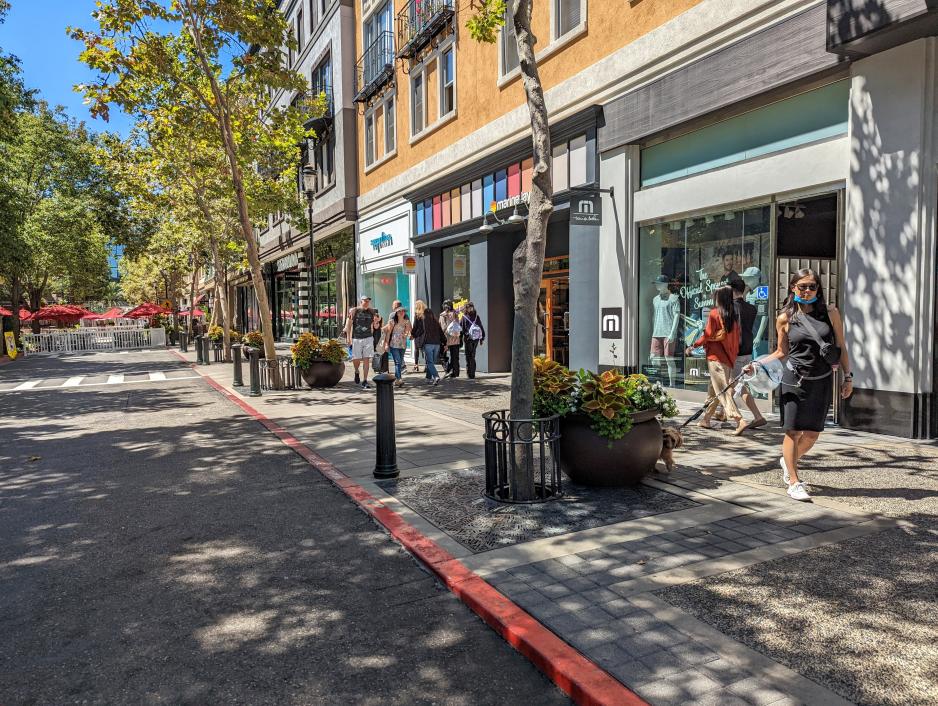The integration of retail and other commercial uses within transit-oriented development (TOD) is a key contributing factor to placemaking, or the creation of vibrant, livable public spaces. Providing convenient access to shopping and services from home and work encourages dynamic neighborhoods where people can easily walk, bike, or take transit for daily or less frequent trips.
In addition, overbuilt retail and the boom of e-commerce have contributed to an ongoing decline of brick-and-mortar stores. To cater to modern-day customers, development of shopping centers is pivoting to not only sell goods but to also become an experiential destination. Thus, retail should appropriately and creatively interface with the public realm to become a place for socializing and gathering.
Retailers are also integrating their online presence with how they do business in physical stores; for example, many companies are advertising the in-store experience through social media and providing curbside/in-store pick-up. New strategies for retail integration will need to allow for flexibility in uses and provide physical infrastructure that supports new technologies.
Retail Concept and Tenanting Plan
Offer a strong retail development concept and appropriate tenanting plans that create an opportune mix of community amenities, responding to the neighborhood’s target market.
Retail Vacancies
Seek to fill any ground-floor retail vacancies with appropriate types of businesses.
Financial Incentives for Retail Development
Attract and retain retail uses within TODs and transit areas.
Local Retail
Foster a unique local identity by encouraging local retail over chain stores and big-box retail to locate in retail TOD.
Siting Retail
Locate retail strategically so that businesses receive adequate foot traffic and are located near other complementary businesses.
Ground Floor Activation
Activate ground floor uses to promote walkability and sociability around transit stations by creating an interesting and inviting pedestrian environment. Enhance neighborhood safety and security by encouraging “eyes on the street.”
Experiential Retail
Promote experiential retail in which a visit to the retail store or district offers a distinctive experience.
Flexibility in Retail Uses
Provide flexibility to allow for other types of uses that encourage pedestrian activity without relying solely on retail.
Case Studies
- San Francisco, California, USA – Flexible Retail Ordinance
- Downtown Container Park, Las Vegas - Experiential Retail
- Adams Morgan Partnership BID, Washington DC – Placemaking to Enhance Retail
